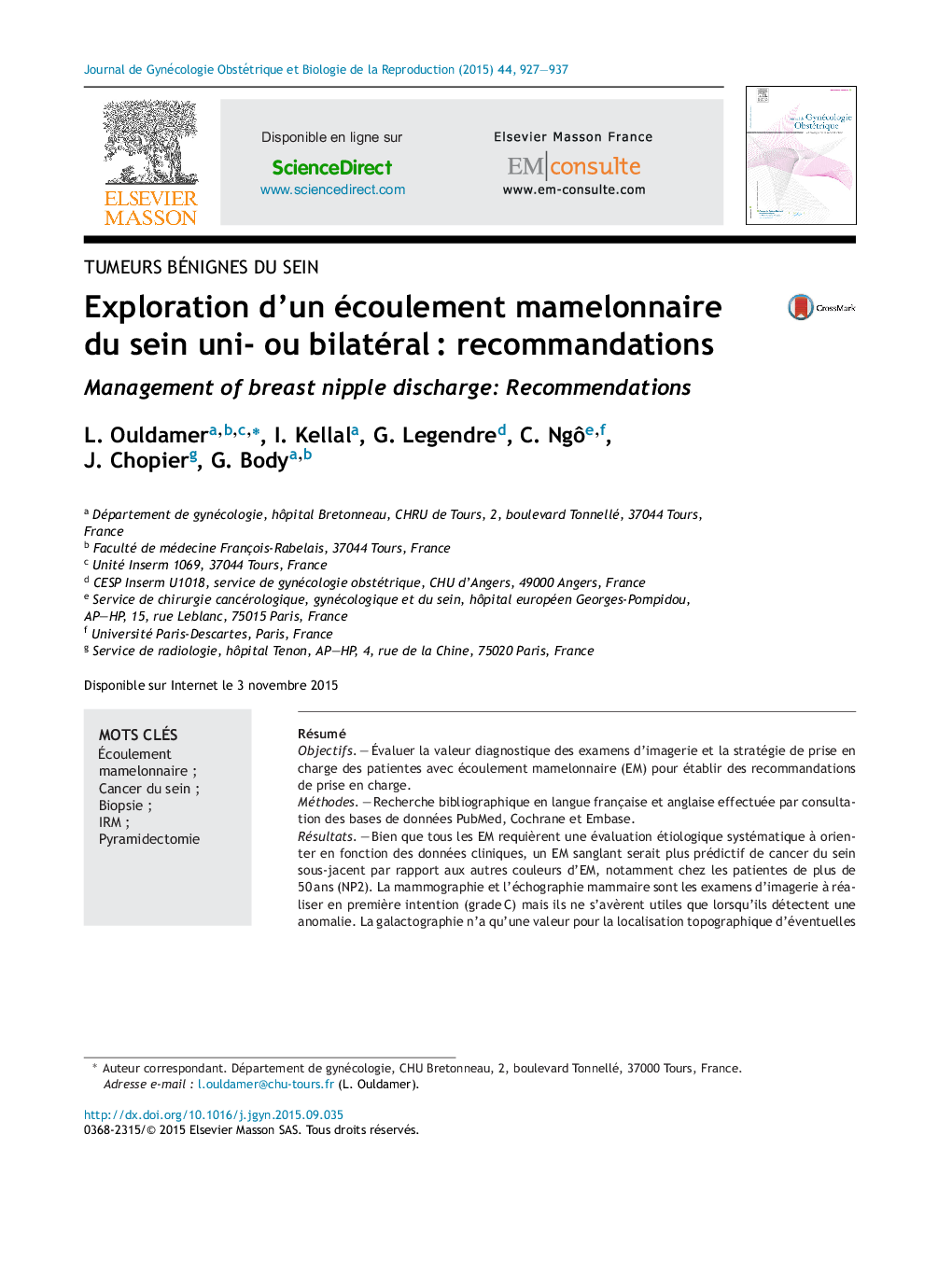| Article ID | Journal | Published Year | Pages | File Type |
|---|---|---|---|---|
| 3272182 | Journal de Gynécologie Obstétrique et Biologie de la Reproduction | 2015 | 11 Pages |
Abstract
Although, all ND require an systematic evaluation guided by clinical data, bloody ND could be a predictor of breast cancer risk among different colors of discharge particularly in patients of more than 50 years (LE2). The mammography and breast ultrasography are the imaging procedures to realize in first intention (grade C) but they turn out useful only when they detect radiological abnormalities (LE4). Galactography has only a localizing value of possible ductal abnormalities (when standard imaging procedures is not contributive) (LE4). Thus, in the diagnostic investigation of a suspicious ND, galactography it is not recommended in standard practice (grade C). The breast Magnetic Resonance Imaging (MRI) is recommended when breast standard imaging procedures are not contributive (grade C). The ND cytology is useful only if it is positive (i.e. reveal cancer cells). There is no proof on the diagnostic performance of the cytological analysis of the ND to allow a recommendation on its realization or not. In front of a suspicious ND, when breast-imaging procedures reveals an associated radiological lesion, an adapted percutaneous biopsy is recommended by percutaneous way (grade C). Vacuum-assisted breast biopsies is a diagnostic tool but can also be therapeutic allowing to avoid surgery in case of benign lesion but current literature data do not allow recommendations on the therapeutic aspect of vacuum-assisted breast biopsy (LE4). In the absence of associated radiological signal, and in case of reproducible bloody persistent ND, a pyramidectomy is recommended (grade C).
Related Topics
Health Sciences
Medicine and Dentistry
Endocrinology, Diabetes and Metabolism
Authors
L. Ouldamer, I. Kellal, G. Legendre, C. Ngô, J. Chopier, G. Body,
